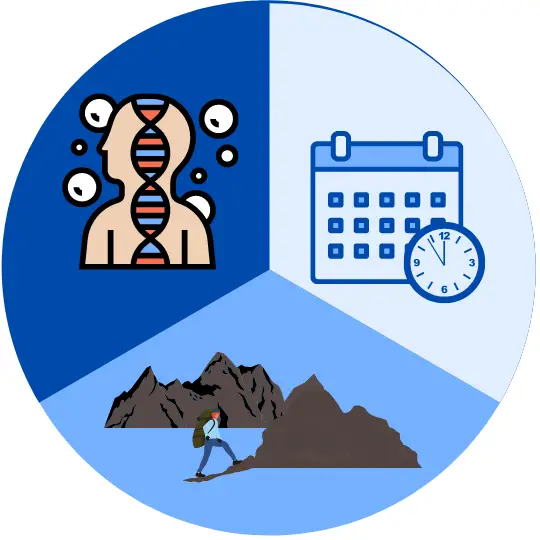The Winter Olympics start this week! There’s nothing quite like the Olympics.
Can you imagine training your entire life for one event? Or decades of hard work culminating in a 20-second race? Talk about pressure!
Olympians make it to the games because of genetics, natural ability, hard work and luck. And they use The SAID Principle to hone their crafts. So can you!
The SAID Principle
SAID stands for Specific Adaptation to Imposed Demands. In short, the human body adapts to the specific demands and stresses placed on it.
For example, resistance training strengthens our bones and muscles, so we can lift more weight. Running long distances builds aerobic endurance to run farther next time. Stretching increases flexibility (which isn’t always a good thing).
Olympians hone their abilities with the SAID principle. Snowboarders develop balance, coordination and confidence through years of practice. Weightlifters build muscle mass and technical skill over thousands of repetitions. Cross-country skiers build aerobic capacity through hours of grueling endurance training.
The human body has an amazing capacity for adaptation!
3 SAID Limits
The SAID principle is a powerful tool. But it can’t do everything. It’s limited by:
Genetics: As an average-height male, my odds of making the NBA are astronomically small, no matter how hard I practice basketball. King James has better basketball genetics than I do.
Time: Adaptation takes time. Doing “too much, too soon” after a long layoff is a recipe for injury. In contrast, patient, progressive training produces amazing results.
Specificity: Specific practice is crucial. If your goal is to climb a mountain, biking around the neighborhood won’t prepare you for the trek. Biking is great exercise, but it won’t transfer much to high-altitude hikes.
Climbing mountains is the best way to train for climbing mountains.

Applying SAID
Your body adapts to the stresses placed on it. With the right stresses, you can reach your fitness goals.
Try these 3 steps to apply SAID to your exercises:
- Pick a goal: For example, “Run a 5k race in September”
- Break it into small chunks: “Run 1 mile by June 1st, Run 2 miles by July 1st”
- Start small: “Walk-jog intervals for 1/4 mile on Wednesday”
Starting small is an underrated tool to build confidence, limit injury risk, and build a consistent habit (learn more about building an exercise habit at the end of this article).
Even if your personal “Olympics” won’t be televised, you don’t need to be an Olympian to take advantage of the SAID principle.
Readers: Have you applied the SAID principle in your training? Let me know in the comments.
For more evidence-based insights you won’t find anywhere else, join the free, fast-growing Facts & Physio Newsletter. Plus, get The Recovery Checklist when you sign up.

